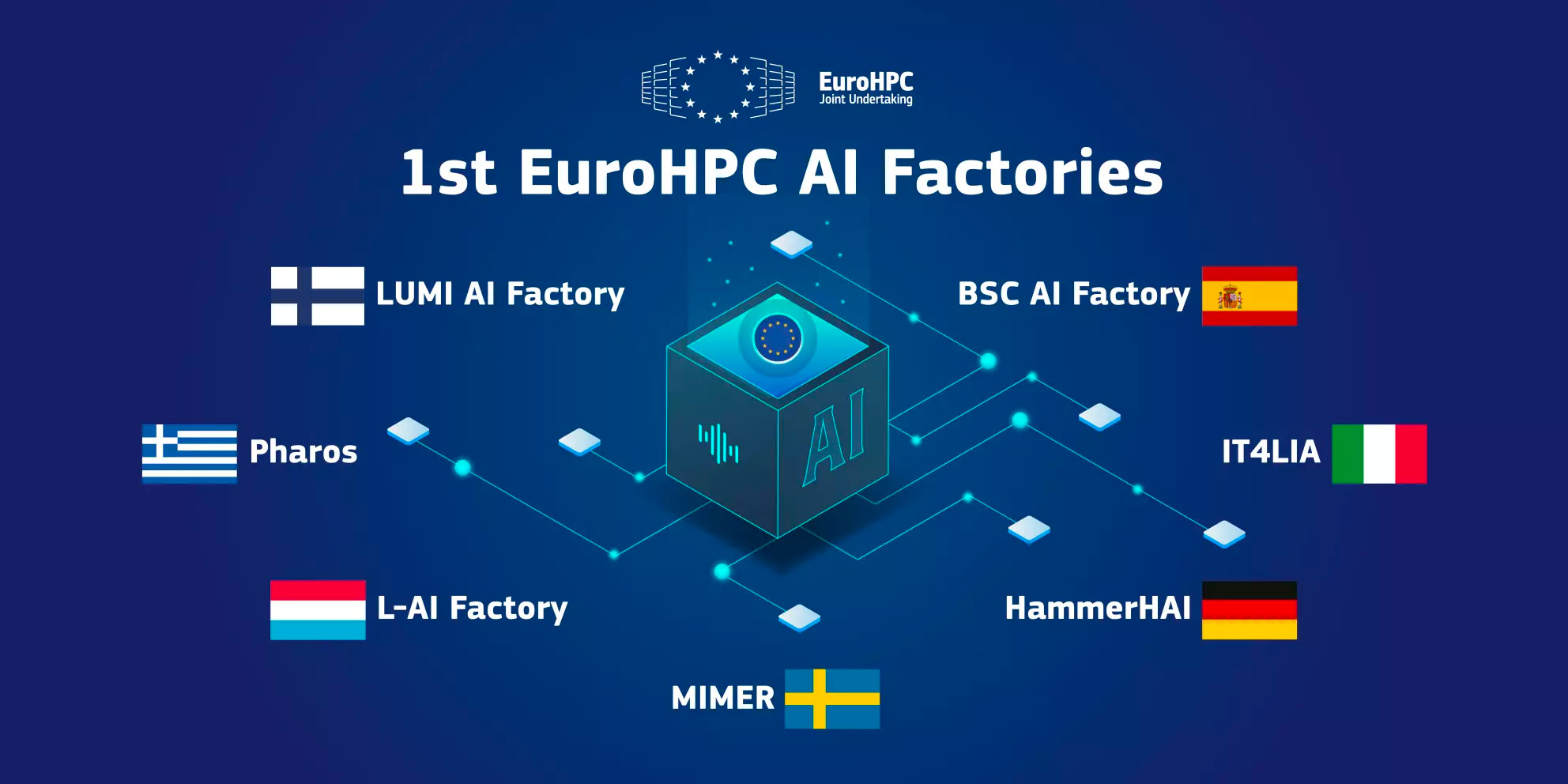
EuroHPC JU
European High Performance Computing Joint Undertaking has announced the results of the call launched last September for the creation of the first European AI Factories, which selected the IT4LIA AI Factory project, the initiative proposed by Italy, with the participation of Austria and Slovenia, and co-financed by the Ministry of University and Research, the National Cybersecurity Agency (ACN), the Emilia-Romagna Region, the CINECA consortium, the National Institute of Nuclear Physics (INFN), the ItalyMeteo Agency, the Italian Institute of Artificial Intelligence for Industry (AI4I), and the Bruno Kessler Foundation (FBK). The initiative, coordinated as hosting entity by CINECA, also includes participation from other national institutions and organizations, such as the ICSC Foundation – National Research Center in HPC Big data and Quantum Computing.
The project benefits from a total investment of about 430 million euros, co-financed equally by Italy and the EuroHPC Joint Undertaking.
The comment of Fabio Pammolli, AI4I’s President
“The Commission’s choice is an important signal, for Italy and for the European economy, which urgently needs to fund large computing infrastructures to increase the technology transfer rate and be competitive with the US and China. As AI4I, we are ready to operate as the implementing entity for the Italian AI Factory, providing all services to businesses. The emphasis on business services highlights a deep awareness in our country of the importance of ensuring a continuous and efficient flow through all phases of AI, from data collection and management, through model production, and up to the post-production phase where the AI solution remains subject to ongoing maintenance and updates and becomes the basis for further developments. The challenge is to quickly integrate the different actors in the supply chain, creating a virtuous and rapid connection between Italian manufacturing SMEs, startups and companies developing AI solutions, our Research and Development units, and the new supercomputing infrastructure. To tackle this challenge, a common strategy is needed. Businesses will benefit, as they can immediately use specific models to enhance their activities. The research system and the supercomputing infrastructure itself will also benefit, as it can develop a constantly updated layer of modeling that meets the needs of businesses.”







